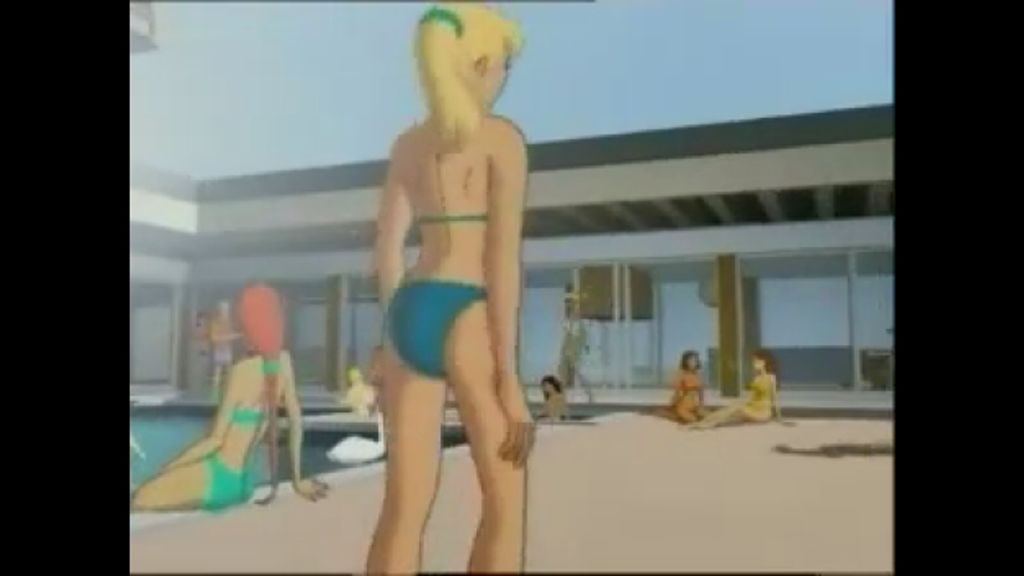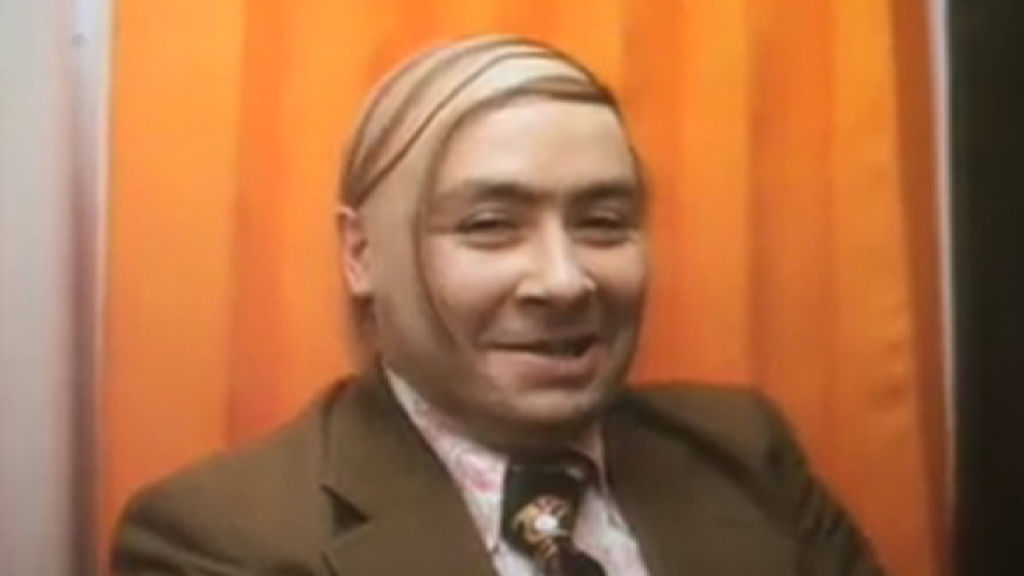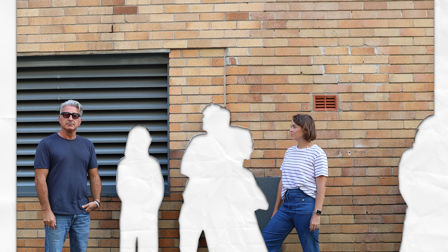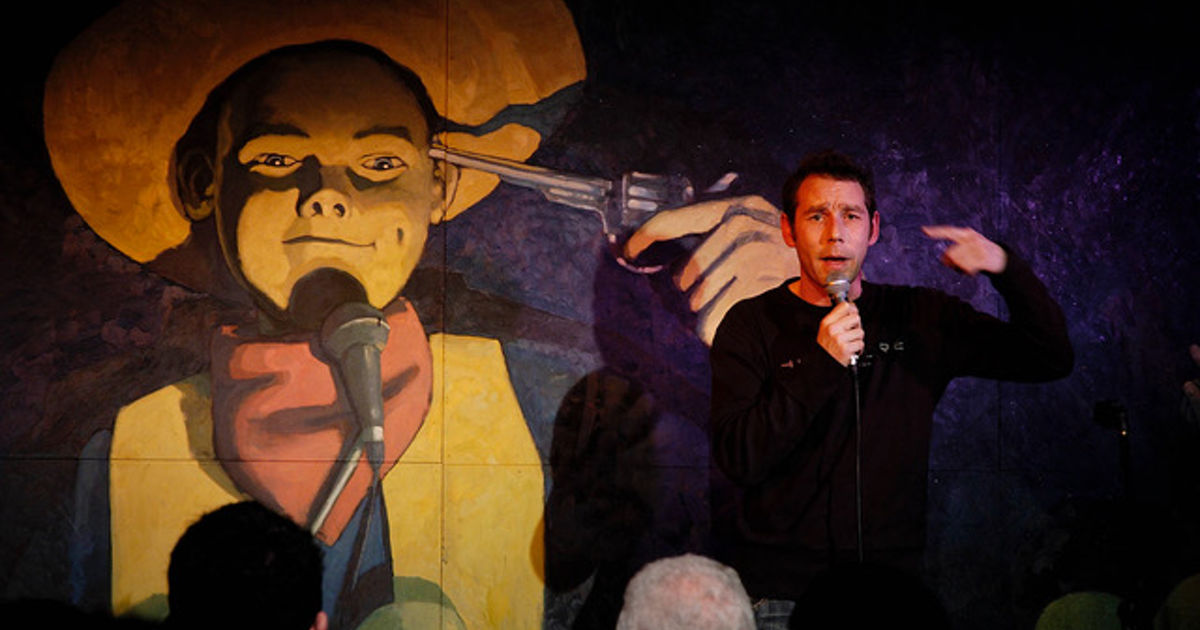Pete Cain's funny bones
He's a creative, a director and a tutor at the School of Communication Arts. The common denominator across each is humour. From selling time shares in Lanzarote to working with brands such as Boddingtons and Carling, Pete Cain has employed comedy at every turn. Oh, he's also a stand-up. Figures. Here, he discusses why truth is at the heart of humour.
If you can make someone laugh, chances are you can pitch a sale to them, too.
And they’ll even thank you for it. Because laughter – or at least that smile of recognition from which laughter grows – is rocket fuel for brands and campaigns, the lubricant that greases the conversation to bring us all on the same side. Just ask copywriter, director, stand-up, tutor at the School of Communication Arts (SCA) – and, most recently, founder of creative collective Raised Eyebrow Society, Pete Cain. Or rather, cast an eye over some of his own work as well as his favourite funnies when it comes to how comedy works.
John Webster was a genius ad writer because the product was always at the centre of the skit.
Anyone nudging the shores of ‘vulnerable’ status in terms of their age over lockdown will almost certainly remember, through a haze of nostalgia, the likes of Leonard Rossiter and Joan Collins for Cinzano, or the bathos of lighting up a Hamlet cigar in the classic Photobooth spot starring Gregor Fisher before he donned the vest of Rab C Nesbit. “I grew up watching that wonderful campaign,” exclaims Cain from his lockdown sofa, where he’s been recovering from a quintuple heart bypass (no, I didn’t know they existed either). “The comedy timing in Photo Booth was perfection itself.”
Hamlet – Photo Booth
Cinzano – Rossiter/Collins - Plane
Above: Classic UK comedy spots for Hamlet and Cinzano.
He cites the great John Webster as the go-to example of comedic excellence in advertising, and as a tutor in creative strategy at the School of Communication Arts, where he first pushed through the door in the early 1990s before going on to head campaigns at BBH, M&C Saatchi and Leith, he should know. And he knows exactly why, too. “John Webster was a genius ad writer because the product was always at the centre of the skit,” he says, “Which it always should be. If it’s not, you’re just writing a sketch and you’re not nailing the product. The humour needs to be about or around the product. Or how people interact with the product. Look at Leonard Rossiter; it was all about the drink, it was always laden with the product. It comes down to connecting your audience, and the people you want to engage with this product, with humour that connects them to that product.”
If you would like to read about Cain's top 10 funniest TV spots, click here
When he was a teenager, Cain turned a week’s holiday in Lanzarote into a four-year sales career, pitching time shares to holidaying Brits who really didn’t want to know. As he reveals, that teaches you a thing or two about connecting. “You’ve got another tout five yards each way, and people who don’t want to talk to you,” he says. That was his stage, his set, and the way to get noticed was to have a better pitch. “I had funny little things I said that others didn’t. I wasn’t the best but I had the best opening line, the best connectors. Like an ad, you’ve got no time. And like ads it’s about tricking them and engaging them with something that connects you to them.”
You’re brought in to solve a client’s problem. You solve their problem, then they start changing your solution, so it no longer solves that problem. And that will drive you mad.
Under the tutelage of John Gillard, who set up the SCA in 1985, Cain graduated in the early 1990s with his partner for the next 15 years, Louis Bogue, with whom he worked on campaigns for Silk Cut (the award-winning Cheesegrater press ad), Boddingtons, the 2004 Carling Love Football extravaganza, and its earlier campaign for the 2002 World Cup featuring slapstick ways of bunking off work to watch the footie during the day. This is a case in point – while other campaigns got all worked up over heroic athletic greatness, Cain took the polar opposite route. “We looked at the match times, and went, 'shit they’re on at 10am, people are gonna bunk off work to do that'. So the thought was, people bunking off of work to watch the football, which everyone can relate to, which is why it did so well.”
Credits
powered by
- Agency Bartle Bogle Hegarty (BBH) UK/UK
- Production Company Nexus Studios
-
-
-
Unlock full credits and more with a Source + shots membership.
Credits
powered by
- Agency Bartle Bogle Hegarty (BBH) UK/UK
- Production Company Nexus Studios
- Post Production The Mill London
- Creative Mathew Saunby
- Creative Bruce Crouch
- Creative Adam Chiappe
- Director Stig Bergqvist
- Director Jonas Dahlbeck
- Producer Leila El-Zein
- Producer Charlotte Lambert
- Producer Chris O'Reilly

Credits
powered by
- Agency Bartle Bogle Hegarty (BBH) UK/UK
- Production Company Nexus Studios
- Post Production The Mill London
- Creative Mathew Saunby
- Creative Bruce Crouch
- Creative Adam Chiappe
- Director Stig Bergqvist
- Director Jonas Dahlbeck
- Producer Leila El-Zein
- Producer Charlotte Lambert
- Producer Chris O'Reilly
Above: Boddingtons, which Cain worked on while at BBH.
He found that the hardest thing in creating comedic spots was getting it past the internal gatekeepers. “Many of the greatest ads all died in research,” he says. “I quit after writing the Love Football. It got killed by research every time. We rewrote and represented. We had to fight on everything. Eventually it went to the head of Carling, and he said yes. It came out, it was a huge success, and we were proved right, and wrote the next ad, the two guys racing home to watch the football, and I was having the same arguments with the same people about the same things.” He grimaces, and expresses pithily and succinctly what many a creative has thought over the years. “You’re brought in to solve a client’s problem. You solve their problem, then they start changing your solution, so it no longer solves that problem. And that will drive you mad.”
All the stuff that goes on between humans, you say that one witty thing and you’re connected. That is the key to why advertising works and why humour works.
In Cain’s case, it drove him to stand-up comedy, and co-writing No Signal, a 10-episode sketch show satirising satellite telly on the FX Channel. Eventually he returned to the ad game, using humour once again to communicate more serious subjects on the likes of Parkinson’s Up Your Friendly. Can comedy tackle the hard, heavy subjects better than a straight approach? “With Parkinson’s, they came to me because they wanted something lighthearted. There’s a phrase about humour being the quickest connector, that it cuts through everything. All the stuff that goes on between humans, you say that one witty thing and you’re connected. That is the key to why advertising works and why humour works; it’s the speed and the connection. It gets you to your people quicker. And the Parkinson’s Up Your Friendly campaign was hugely successful reaching people. People generally don’t want heaviness.”
Above: Cain's Parkinson's film, Up Your Friendly.
But they do want to connect. We all do. Whether with a stand-up on stage at the Comedy Store, or with a short film on a social platform. Whether it’s slapstick or verbal wit, we recognise ourselves and connect via that recognition. “A comedian goes on stage and tells you something you already know,” says Cain. “It’s the recognition factor. The ‘me too’ moment, the ‘I’m that person’ moment. And that’s what I’m looking for in advertising, a genuine insight, an observation that an observational comedian would make.”
That’s what I’m looking for in advertising, a genuine insight, an observation that an observational comedian would make.
One of his harder-hitting spots, for The Green Party, is not comedy per se, but its reversal of norms is deeply, darkly arresting in the way the best social comedy can be. The scene: lovely grandparents waving off their beloved grandson in the family car. To which a pipe from the exhaust has been attached. “It was to shock,” says Cain. “The way we are living is poisoning our grandchildren. We’re poisoning the planet, so I just brought that in to the real world.”

Above: Cain in a poster for one of his stand-up shows.
It’s a good illustration of comedic reversal as creative strategy. As a tutor at the SCA, it’s creative strategy that lies at the core of what he teaches, and at the core of his work with Raised Eyebrow Society – locating and employing that creative kryptonite to unlock insights and fuel great campaigns, and doing it through humour.
The truth is where it’s at. I want the truth, and I want the truth of it that’s funny.
“It’s the alchemy that unlocks the work,” he says. “The truth is where it’s at. I want the truth, and I want the truth of it that’s funny. That’s what people laugh at, that recognition. They recognise that you’ve recognised it. You’re recognising something they know. People like to laugh, life is tough, there’s not much to laugh about. You want a little light relief, and it’s an advertisers responsibility to entertain. If they are going to invade your living room and show you something and give you a message, the least they can do is entertain, and the quickest form of entertainment is humour.”
)















